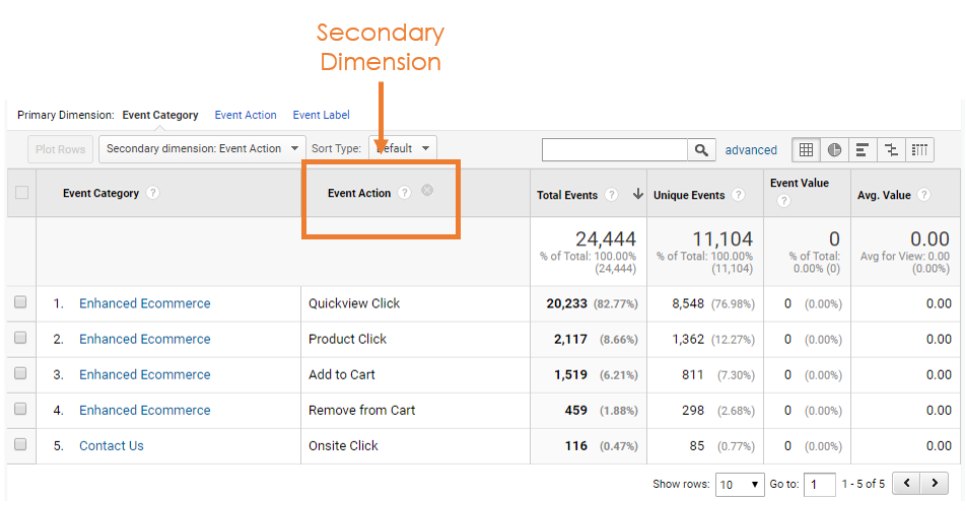Improving Data Accuracy: Google Analytics Secondary Dimension Insights
Improving Data Accuracy: Google Analytics Secondary Dimension Insights
Blog Article
Unlocking the Power of Second Dimension Analytics for Improved Information Insights and Decision-Making
In the realm of information analytics, key measurements commonly take the spotlight, but the true deepness of understandings lies within the realm of secondary measurements. By using the power of additional dimension analytics, organizations can introduce surprise patterns, uncover correlations, and remove a lot more significant conclusions from their information.
Value of Additional Dimensions
Discovering the relevance of secondary measurements in analytics reveals the covert layers of information understandings essential for informed decision-making in numerous domains. Second dimensions provide a much deeper understanding of main information by using additional context and viewpoints. By integrating secondary measurements into analytics, companies can extract a lot more nuanced and extensive understandings from their datasets.
One key value of secondary measurements is their capability to sector and categorize main information, allowing for an extra comprehensive evaluation of specific parts within a dataset. When looking at the data as a whole, this division makes it possible for companies to recognize patterns, trends, and outliers that may not be evident. Moreover, additional measurements aid in uncovering connections and dependences between different variables, causing even more exact forecasting and predictive modeling.
Additionally, additional measurements play a crucial role in improving data visualization and reporting. By including additional measurements to visualizations, such as charts or graphes, experts can develop more useful and insightful representations of data, assisting in much better interaction of findings to stakeholders. Generally, the integration of secondary measurements in analytics is critical in unlocking the full capacity of information and driving evidence-based decision-making.
Key Advantages of Making Use Of Second Measurements
Making use of additional dimensions in analytics uses organizations a critical advantage by augmenting the deepness and granularity of data insights. By dissecting information using additional dimensions such as time, place, tool type, or customer demographics, organizations can reveal patterns, patterns, and relationships that may or else remain concealed.
Additionally, the application of second dimensions enhances the context in which primary data is translated. By leveraging additional measurements in analytics, companies can harness the complete possibility of their information to drive far better decision-making and attain their business objectives.
Advanced Data Analysis Techniques
A deep study advanced data analysis techniques discloses innovative approaches for removing beneficial understandings from intricate datasets. One such method is artificial intelligence, where formulas are utilized to determine patterns within data, predict outcomes, and make data-driven choices. This approach enables the automation of logical design building, enabling the handling of huge quantities of data at a faster pace than traditional techniques.
An additional sophisticated technique is predictive analytics, which makes use of analytical formulas and artificial intelligence methods to forecast future end results based upon historical data. By assessing fads and patterns, businesses can prepare for client habits, market trends, and possible dangers, empowering them to have a peek at these guys make aggressive decisions.
Furthermore, message mining and sentiment evaluation are useful techniques for removing insights from disorganized data resources such as social media sites comments, consumer evaluations, and study actions. By analyzing message data, companies can understand consumer opinions, recognize emerging patterns, and enhance their product and services based on comments.
Enhancing Decision-Making Through Additional Measurements

Enhancing decision-making through additional measurements enables companies to make even more educated and targeted strategic options. By segmenting customer data based on secondary dimensions like purchasing history or engagement levels, companies can tailor their advertising techniques to certain audience sections, leading to enhanced conversion rates and customer complete satisfaction. Furthermore, additional dimensions can help identify correlations and relationships between various variables, making it possible for companies to make data-driven choices that drive growth and success.
Implementing Second Measurement Analytics
When integrating secondary measurements in analytics, companies can unlock deeper understandings that drive calculated decision-making and enhance overall efficiency. Executing secondary measurement analytics needs a structured strategy to make sure efficient utilization of this effective tool. The primary step is to identify the vital metrics and measurements that align with the company's tactical objectives. This involves understanding the details questions the organization their explanation looks for to answer and the information points required to resolve them.

Furthermore, organizations need to leverage advanced analytics devices and modern technologies to improve the procedure of including secondary dimensions. These devices can automate information handling, analysis, and visualization, enabling companies to concentrate on analyzing insights rather than hands-on information adjustment.
Conclusion
Finally, additional measurement analytics play a critical role in enhancing data insights and over at this website decision-making procedures. By making use of innovative information evaluation techniques and implementing secondary dimensions efficiently, companies can open the power of their information to drive calculated organization choices. The vital advantages of making use of second measurements can not be overemphasized, as they give a much deeper understanding of information patterns and partnerships. It is necessary for companies to utilize additional measurement analytics to stay competitive in today's data-driven landscape.
In the realm of data analytics, key measurements typically take the spotlight, but the real depth of insights exists within the realm of secondary measurements.Using secondary measurements in analytics uses organizations a strategic benefit by enhancing the depth and granularity of information insights. By leveraging second dimensions in analytics, organizations can harness the complete potential of their information to drive much better decision-making and achieve their organization goals.
Implementing information validation procedures and regular audits can aid maintain information quality and integrity.
By using innovative data evaluation methods and applying additional measurements efficiently, companies can unlock the power of their information to drive strategic organization decisions.
Report this page